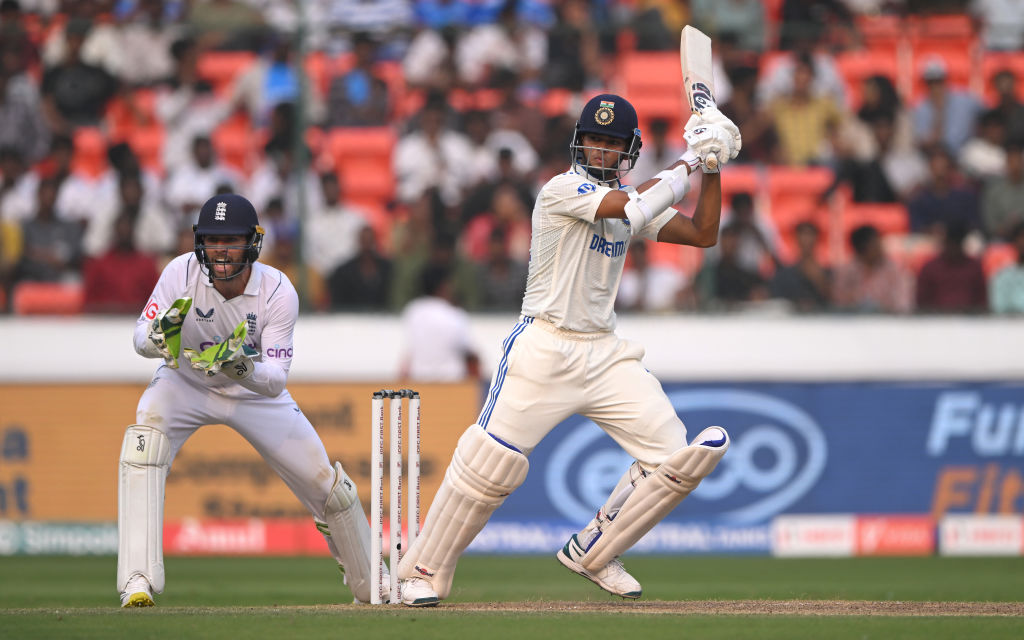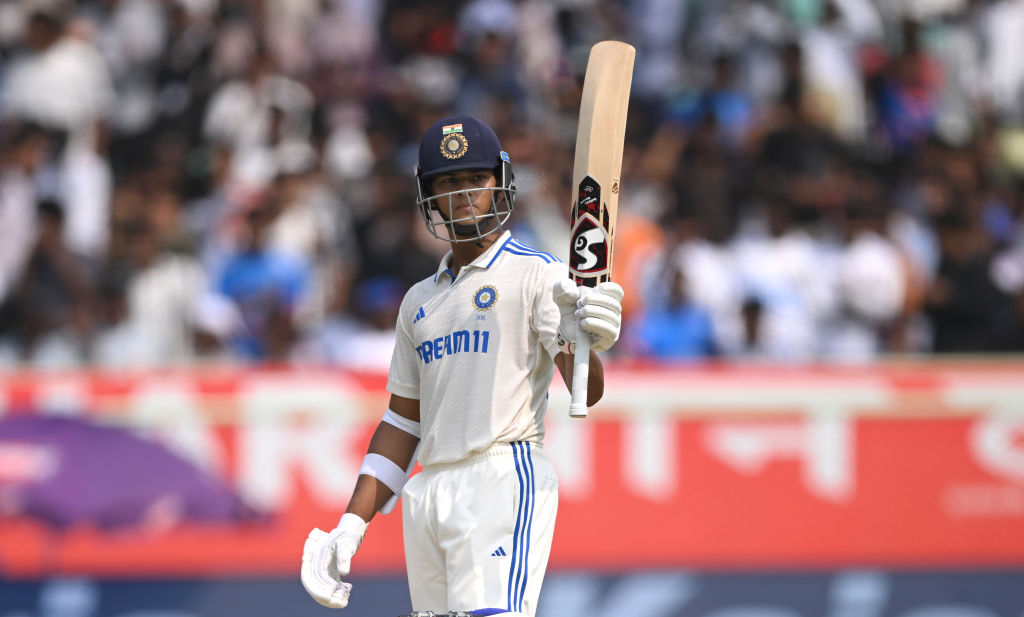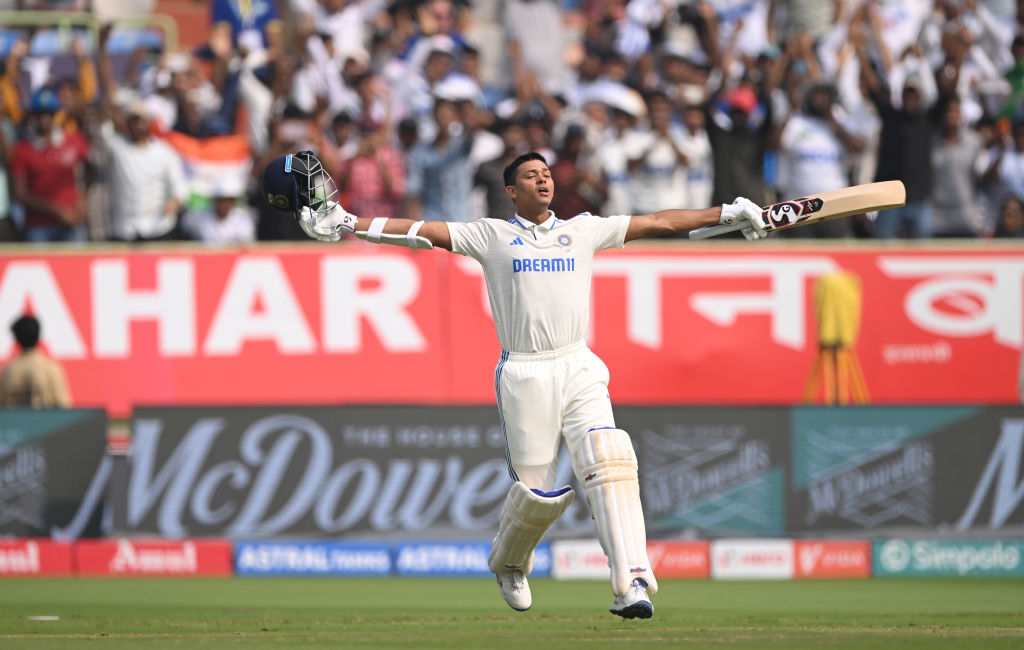- Sunday, April 20, 2025
His back-to-back Test double hundreds against England in quick time allowed India to put the Three Lions’ Bazball style under pressure and many found a glimpse of the former Indian opener’s aggressive batting in his game.

By: Shubham Ghosh
INDIA’S 22-year-old opener Yashasvi Jaiswal has been a sensation in the current Test series against England at home. The left-handed batter, who was just four-Test old at the beginning of the high-profile series, has slammed two back to back double hundreds besides a half century in the first three matches of the series, amassing 545 runs in just six innings.
His exploits saw Jaiswal breaking into the top 20 Test batters in the International Cricket Council’s (ICC) rankings, rising 14 places to 15th. His consecutive double hundreds saw him joining an elite club of seven cricketers having such a feat in the red-ball format, including former batter Vinod Kambli (against England and Zimbabwe in 1993) and former captain Virat Kohli (both against Sri Lanka in 2017).
While the story of Jaiswal is a typical rags-to-riches story as the cricketer spent nights in tents and reportedly sold paani puris, a popular street food in India, a claim which is contested however, one should not lose sight of the bigger point. The batter is here with a style that looks to relaunch the grammar of opener’s batting in Tests.

Take a backseat Bazball, till England win this series.
Read: Yashasvi Jaiswal, who was once homeless, hits double ton against England
In modern-day Tests, the role of openers has changed. Gone are the days of Geoffrey Boycott and Sunil Gavaskar whose primary responsibility was to see off the ball so that the batters following them had an easier life on the wicket. Openers then were more seen as disruptors, aiming to unsettle the main bowlers of the opposition and their captains’ strategy. Gavaskar, for instance, was so engrossed with such batting displays that he had once scored 36 not out off 174 balls in a 60-over match against England in the one-day World Cup in 1975. Perhaps he was playing for a draw!
Read: India crush hapless England by 434 runs to lead Test series 2-1
Fast forward to the latest Test match in Rajkot where three openers from both India and England scored brisk hundreds — India captain Rohit Sharma and England’s Ben Duckett in the first innings and then Jaiswal in the second. The young Indian batter divided his knock into two equal halves on the third and fourth days — scoring 104 and 110 respectively. He hit 12 sixes in the process and particularly toyed with James Anderson, the world’s most successful fast bowler in Tests with nearly 700 scalps.

Jaishwal, however, is not new to belting double hundreds. In 2019, he became the youngest in the history of List A cricket to hit a double hundred. He scored 203 in just 154 balls for Mumbai against Jharkhand in Vijay Hazare Trophy and his age then was 17 years and 292 days.
The likes of Jaiswal can be big assets for his side, be it in international cricket or Indian Premier League, because they are capable of running away with the game even before the opposition blinked. Having started his Test career less than a year ago, Jaiswal already has a scoring rate of 69 per 100 balls and that will only go up.
Many would draw a comparison between Jaiswal and Virender Sehwag, another blistering opener that India had in Tests who scored 83 runs per 100 balls and maintained it throughout a career in which he played as a Test opener in 99 matches.
Sehwag in fact had set a trend that many openers from across the cricketing world followed, much before the advent of the Bazball variety. Sri Lanka’s Tillakaratne Dilshan, Australia’s David Warner and Sehwag’s compatriot Shikhar Dhawan also came from the same school of batting, as does Rohit Sharma. Not many, however, could sustain it over a long career, barring the likes of Warner. Sharma was more effective in the white-ball varieties than the red ball.
And here is where Jaiswal is someone the cricketing fraternity is already looking up to.
Both his double hundreds in such quick time that it gave his side much time to put England under pressure and Ben Stokes’s men crumbled despite trying to find a Bazball reply to India’s ‘Jaisball’.
In the second Test in Visakhapatnam, the southpaw slammed 209 in just 290 balls that helped the hosts take control of the game on the first day. In Rajkot, his 214 studded with 12 sixes blew England, who perhaps were thinking more about Kohli’s absence in the series than Jaiswal’s presence, away.
Jaiswal’s batting has proved to be superior to the Bazball style as he created opportunities on the merit of deliveries before dealing with them. In England’s case, they were going for shots that were decided upon in the dressing room (Joe Root’s bizarre shots point to that fact) and perishing in the process against the likes of Jasprit Bumrah, Mohammed Siraj and some lethal spinners.
The Indian batter has so far displayed a Sehwag-like aggression combined with Sachin Tendulkar-like work ethic and that certainly prepares a solid path before him to march towards greatness. But even those two celebrated predecessors of Jaiswal hadn’t tasted success like him after the end of their seventh Tests, respectively. While Tendulkar had to wait for a decade to score his maiden Test double century, Sehwag had two hundreds at the end of his first seven games.
While speaking of Jaiswal, one must not forget the likes of Jwala Singh, a local cricketer-turned-coach in Mumbai who mentored him early on, and Zubin Bharucha, a former Mumbai opener who is the head of cricket of Rajasthan Royals, the IPL team that Jaiswal plays for.
Jaiswal apparently had issues with stamina, suffering from cramps and required the medical staff to attend him in the middle of an innings. But he has overcome by playing lengthy knocks. In 22 first class matches, Jaiswal has made 12 hundreds and 10 of those were 140 or more.
The youngster also has a tremendous hunger to improve. Impressed by this quality, Bharucha did not hesitate to compare him with the likes of Tendulkar and Rahul Dravid or even ranking him a notch above them when it comes to his willingness to learn. His height and long arms also give him better control of the shots that he plays.
Once, Jaiswal was seen practising against 10 bowlers — all armed with 25 new balls — on a grassy surface, ahead of a first-class match in which he scored a double hundred and a hundred.
The batter has been equally effective in white-ball format, which made former Australia all-rounder Tom Moody describe him as a ‘generational talent, a genuine all-format player’.
It is now up to the talented young batter to ensure that he holds the baton of Mumbai’s glorious cricket legacy high and doesn’t fade out too early. Born in a remote village in Uttar Pradesh, the cricketer has come a long way to establish his talent before the world. After having seen off the initial challenges that life threw at him as he does while playing the moving new ball as an opener, Jaiswal is now destined to score big — both on and off the 22 yards.